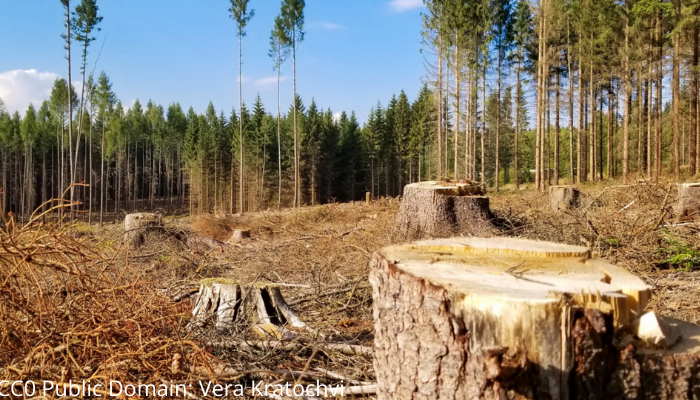Paper - what's the problem?
Published: 12 Nov 2021

The history of paper is a fascinating one since its first use by Chinese inventor Cai Lun.
Nowadays, the paper and pulp business worldwide is huge but it does come with a lot of problems.
Planting trees is obviously a must to help us combat dangerous runaway global heating.
We must also reduce the amount of trees that are cut down around the globe to feed some of our unnecessary lifestyle habits.
In this section we look at our paper use while we have looked at other reasons behind deforestation in other sectors of Amdani!
One thing we mustn’t overlook in our fight against climate chaos and the nature emergency is our wasteful use of virgin fibre paper products. Whether these are single use coffee cups, office paper use, junk mail, till receipts or everyday products such as toilet roll.
The amount of land, energy, water and chemicals used in producing our paper products is frighteningly huge. Some of the solutions conversely are incredibly easy.
There an awful lot of scary statistics around paper use in Wales, the UK and the world. It’s quite sobering. In an age where the focus has rightly been on reducing plastic use, we need to make sure we also address the wasteful use of other materials such as paper products.
If you want to shock yourself have a look at this.... How much paper has been produced so far this year?
The Environmental Paper Network (EPN) has a great little video explaining the situation.
The pulp and paper industry is one of the largest industrial sectors in the world and uses around 40% of all industrial wood traded globally.
Much paper is used wastefully and it may only take a few weeks for forest carbon to be cut, pulped, shipped, used and dumped into the atmosphere.
As a result, paper has a surprisingly big carbon footprint. A discussion paper published by the European EPN in 2013 shows that the way paper is produced and used may result in more greenhouse gas emissions than global aviation!
Since the 1960s, world consumption of paper has quadrupled and use of printing paper has increased six-fold. Just 10% of the world’s population (western Europe and north America) consumes more than 50% of the world’s paper. Europeans and Americans use 6 times as much paper as the world average.
Here in this country, we use around 12 million tonnes of paper each year. That’s a lot!
To produce 1 tonne of virgin paper, it is estimated that energy equivalent to 253 gallons of petrol is used and 2.6 tonnes of greenhouse gases are released.
Another stat is that every person in the UK will apparently use around 4.5 trees per year just in paper usage alone. That’s a lot of trees being chopped down, transported and treated just to feed our paper habits.
UK office workers use around 10,000 sheets of A4 paper each per year. And as it takes about 5 litres of water to produce one sheet of A4 paper, that’s a lot of paper and a lot of water.
Paper and card account for 1/5 of all waste produced in the UK.
And what about toilet paper? The UK uses 1.3m tonnes of tissue a year, according to the Confederation of Paper Industries, with the average British consumer reportedly getting through 127 rolls every year. As most of these are not made from recycled paper, that means a lot of virgin paper is being used just for this alone. Campaigns are springing up everywhere asking for manufacturers to switch to using recycled and alternative fibre rather than using virgin sources.
Chemicals such as methanol, toluene and formaldehyde are used in the paper making process and in the USA, paper mills are seen as some of the worst polluters of any industry.
We need, firstly, to reduce the amount of paper we use, especially on things like single use coffee cups, junk mail and wasteful printing and we also need to make the switch to more use of recycled paper products instead of virgin paper ones.
Recycled paper for example produces 73% less air pollution than making new paper and Project Drawdown calculates that ‘recycled paper directly emits, on average, 0.15 metric tons of carbon dioxide-equivalent less per metric ton produced than virgin paper’ and that ‘Over thirty years, recycled paper can deliver 1.10-1.95 gigatons of carbon dioxide emissions reductions.’
